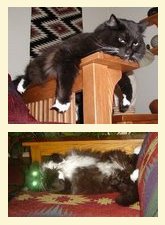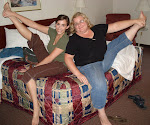.

Today my grandmother, Etta Mohr, passed away, one month shy of her 94th birthday. She was the mother of 3, grandmother of 9, great-grandmother of 19 1⁄2 (one great-grand 'bun' is in the oven), and had 3 great-great grandchildren. She was the “image” of a grandmother – loving, adorable (all 4’ 10” of her), always ready with a kind word, and just a little bit naughty.
I remember special snippets of growing up with her – snapping green beans on the front porch, going down into her scary storm cellar where the big spiders lived, her yummy peach preserves, feeding the multitude of cats that hung around the farm, picking grubs off of tomato plants, a big 'ole tire swing in her front yard, the Brach's circus peanuts & gummy mints in her candy dish, and her fantastic baked beans – that always came with the jingle:
"beans, beans, the musical fruit, the more you eat, the more you toot. The more you toot, the better you feel, so eat your beans at every meal!”
I still call fuschias “the Grandmom plant” because they perpetually adorned her front porch (indeed, I had to go to a catalogue to find the real name to write here). I have one on my back porch every summer to honor her, tho’ sadly, I didn’t inherit her green thumb so their life expectancy is usually very short ;-)
Grandmom was the embodiment of unconditional love, and I was lucky to have her as part of my life for 45 years. There was nothing like one of her hugs! She died assured of the reality of a heaven that held her gardens, husband, and little dog Inky. I may not share her vision, but am comforted by the thought that she went quietly in her sleep, looking forward to reunions with loved ones. And in keeping with her slightly naughty nature, she asked to be buried in a red dress…like the one she was married in.























































